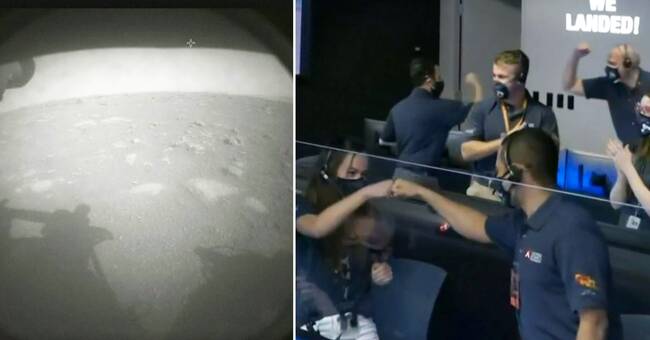A cheer erupted among the engineers in NASA's control room.
After six months of space travel and several years of preparation, the probe landed in the Jezerocrat at 10pm on Thursday night.
- The crater is located in a place that looks like an old estuary.
It is believed that the crater was a lake full of water a few billion years ago, and then it is a good place if you are going to drill for traces of life, says SVT's science reporter Thomas von Heijne.
Looking for signs of life
Perserverance came flying at about 20,000 kilometers per hour and landed using a kind of flying crane that celebrated the probe to the surface.
There it will look for traces of past lives to take home to earth.
The probe also has a helicopter drone with it to test whether it is possible to fly in Mars' thin atmosphere, according to Thomas von Heijne.
- What if it is from here that the evidence comes that there was life on Mars!
Answer in ten years
So far, space projects have gone to Mars, but never brought anything back to Earth.
Perseverance is about the size of a car and equipped with technical equipment.
The robot can examine the samples on site with the help of its equipment, but the samples must be flown back to earth and examined to get absolutely reliable answers as to whether the work was successful.
It may take some time, and is expected to be around 2030.

